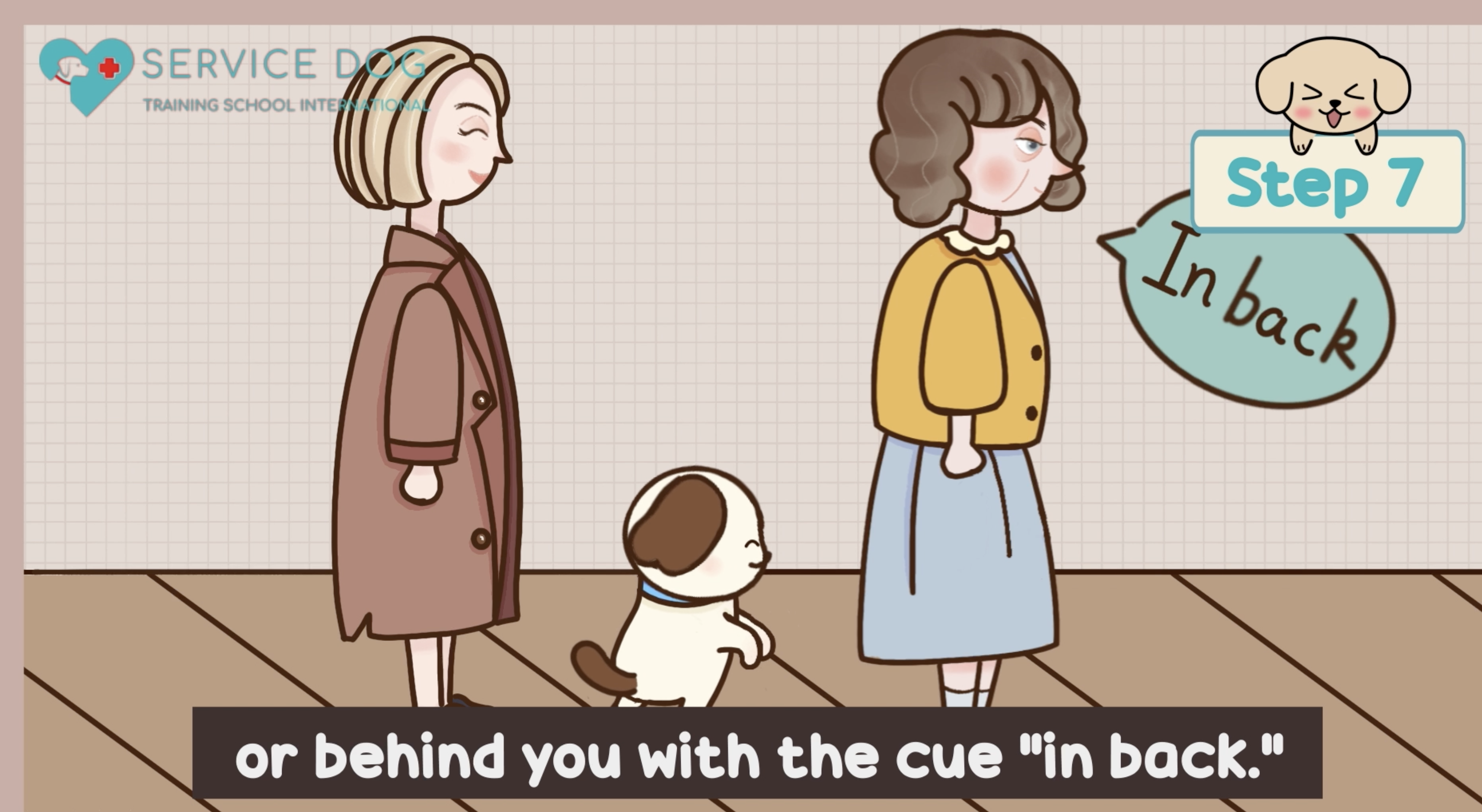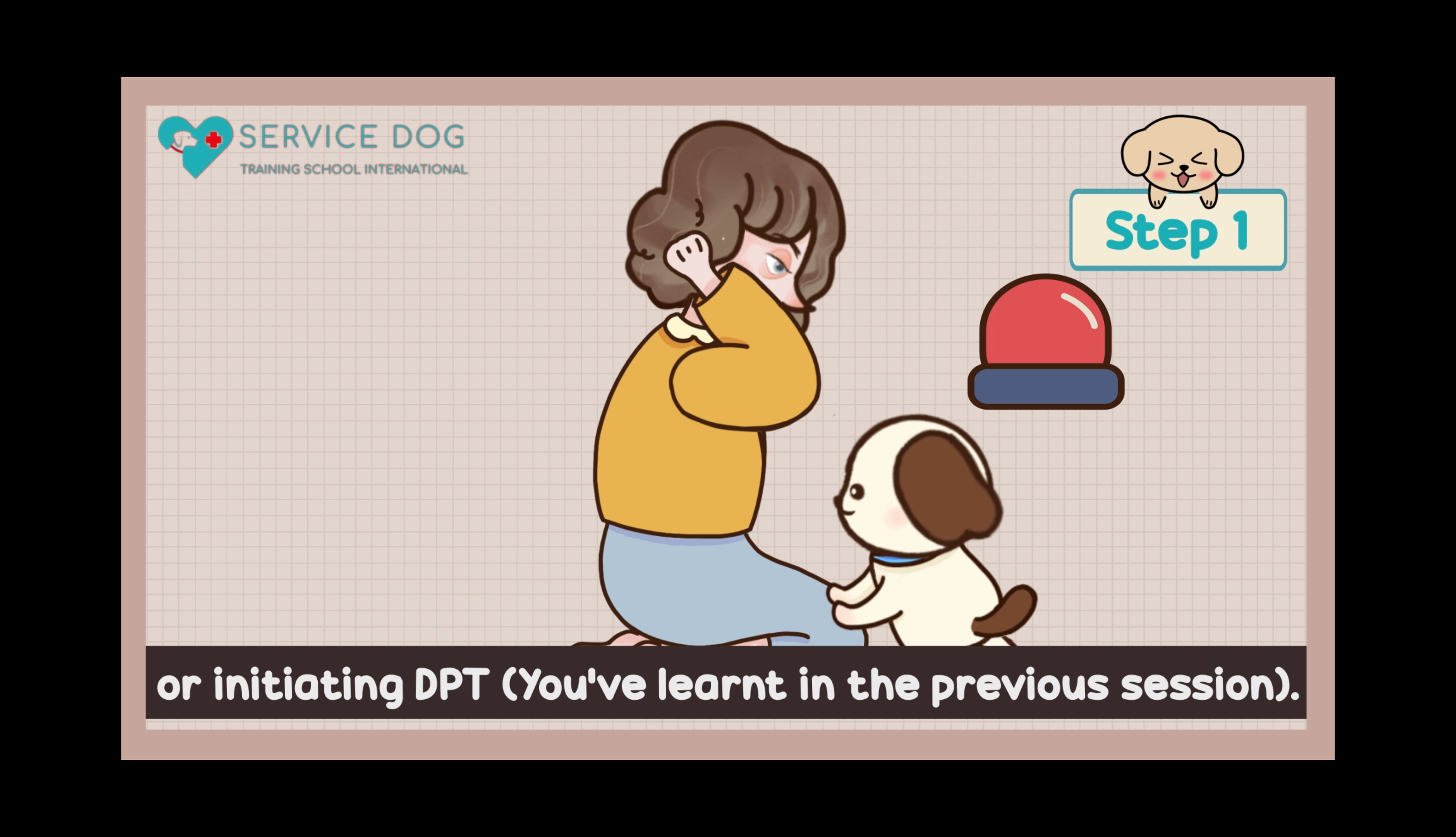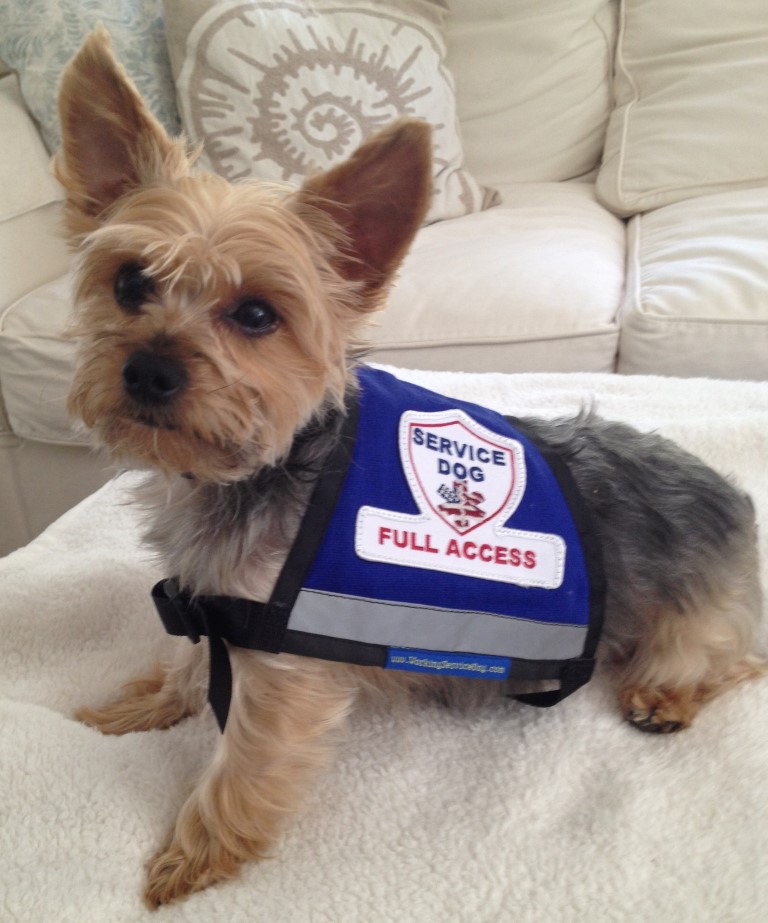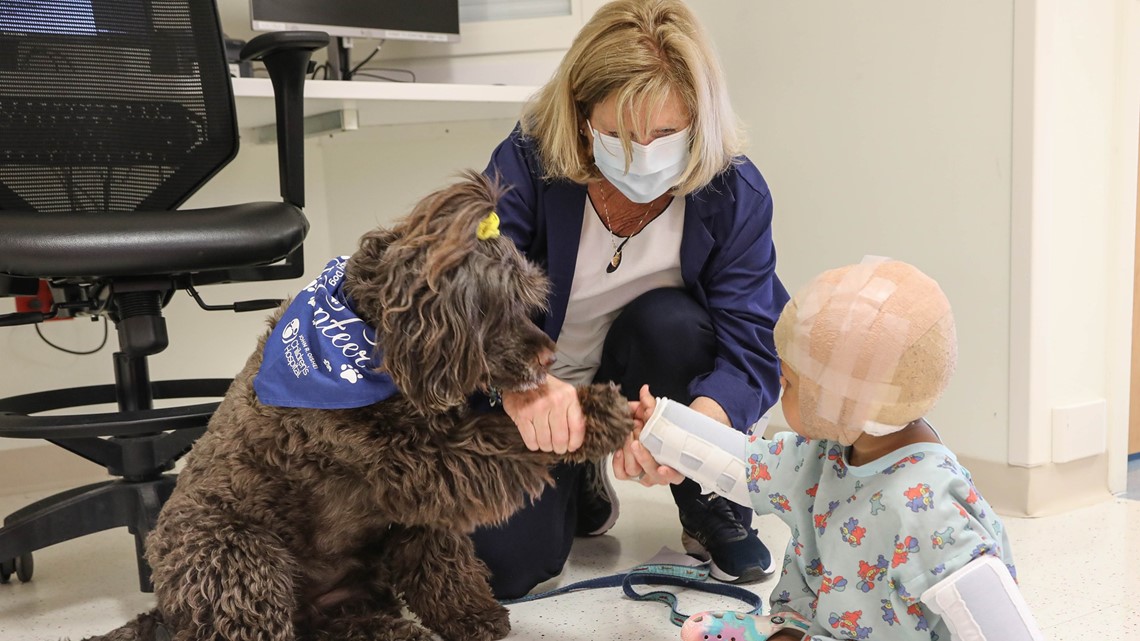- Task 1: Grounding the Handler
- Task 2: Deep Pressure Therapy / Tactile Stimulation
- Task 3: Guiding the Handler to a Safe Place
- Task 4: Alerting
- Task 5: Routine Reminders
- Task 6: Finding/Retrieving Tasks
- Task 7: Waking Up the Handler
- Task 8: Interrupting Repetitive Behaviors
- Task 9: Standing Between the Handler and Others / Using Their Body for Protection
- Psychiatric Service Dog Training Course

Psychiatric Service Dogs (PSDs) are a type of service animal, that performs tasks related to the symptoms of a mental disability, such as depression, anxiety, bipolar disorder, and PTSD. The help that these animals provide is invaluable and sometimes the lives of their handlers depend on it. You may already know that Psychiatric Service Dogs are not Emotional Support Animals, as they perform specific tasks, and do not provide comfort and companionship only. Having said that, today we will take a closer look at what tasks exactly PSDs can perform.
Task 1: Grounding the Handler
“Grounding” in the context of service animals means bringing the handler back to reality when they are having an episode. This can be done by performing various tasks, including licking at their face, pawing at them, sitting on their feet or lap, or rubbing against their body. This task can be extremely helpful when the person is in public and/or is engaged in social interactions.
If a person deals with one or more of the conditions listed below, they are likely to need their Psychiatric Service Dog to ground them when they have an episode:
Anxiety, dissociative episodes (separation from normally-related mental processes), flashbacks (involuntary recurrent memory, also known as a flashback, is characterized by sudden, typically powerful, re-experiencing of a past event or elements of this event), Catatonia (it is a complex neuropsychiatric behavioral syndrome which symptoms include immobility or abnormal movements and behaviors, as well as withdrawal), psychosis, emotional distress, emotional/sensory overload, night terrors, self-harm behavior....etc.

Task 2: Deep Pressure Therapy / Tactile Stimulation
Deep Pressure Therapy is usually conducted in two ways, based on the dog’s size:
1. The dog jumps on the owner’s lap and provides pressure using their whole body (for small breeds);
2. The dog put his/her chin on the owner’s lap (for large breeds).
Tactile stimulation includes the sensation of texture and touch and can be performed in different ways, based on the owner’s preferences- from pawing, nudging, and giving a kiss, to gently pressing the body against the owner’s body. Using their weight and warmth, PSDs can mitigate the symptoms of mental disabilities.
People coping with the health conditions listed below can benefit a lot from this task:
Dissociation, flashback, apathy, feeling of isolation, intrusive thoughts, hypervigilance, depersonalization disorder, fearfulness, distractibility, trembling, emotional overload, hypervigilance.
Task 3: Guiding the Handler to a Safe Place
This is another essential task, that can be life-saving if the handler has an episode in public. A dog can be even trained to guide the owner back to their home.
This type of task can be very beneficial in cases of:
Anxiety episodes, sensory/emotional overload, disorientation, depression (one of the main features of depression is psychomotor retardation, which means decelerating both physical and mental activities), and feelings of fear or confusion.
Task 4: Alerting
Alert tasks are among the most common tasks that PSDs perform besides Deep Pressure Therapy and tactile stimulation. Dogs can be trained to recognize a specific behavior, that their owners exhibit right before an episode occurs, or the episode itself. If the owner rewards the dog every time they are about to have an episode, the dog will learn over time that the episode is actually a cue and that the episode means a reward for them.
By notifying the owner about an oncoming episode the dog prevents them from showing unwanted and potentially dangerous types of behavior and helps them take preventive actions such as taking medication or finding a safe place to sit/lie down. However, alert tasks include a wide range of tasks, that are not limited to anxiety/episode alerting only.
A PSD can be trained to alert the handler to certain sounds, such as phone ringing, alarm clock, baby crying...etc., until the handler takes a specific action, I.e. turn the alarm off.
Also, a PSD can alert family members (a specific person) or passersby when his/her owner is having an episode and is not responsive.
Service Dogs can help increase compliance with alarms by nuzzling or nudging their handler when the alarm goes off until the handler has done the specified activity. This can help with reminders to eat, take meds, go to the gym, or shower.
Anxiety, stress-induced changes in the breathing and heart rates, hyperlocomotion (excessive stimulation of the nervous system, that results in incessant locomotion), emotional/sensory escalation, distractibility, dizziness, fatigue, tremors as a side effect of medication...etc.,
can cause a person to feel detached from reality, or feel extremely overwhelmed to a point, where they are not responsive to their surroundings or may perform harmful behaviors.
Alert tasks are among the most important tasks, that PSDs and service dogs in general, can be trained to do.
Task 5: Routine Reminders
Often handlers train their Psychiatric Service Dogs to remind them of taking medication. This type of training is usually based on one of the following two approaches:
1. Timing-The dog’s meals are given at a certain time of the day, which reinforces the dog to start “bothering” the owner at that time;
2. Cue-based training- It is based on the use of specific sounds, such as an alarm. When the dog hears the sound, he/she notifies the owner that it is time to take their medication.
People suffering from insomnia, disorganization, and memory issues, can greatly benefit from this task.
Task 6: Finding/Retrieving Tasks
Although retrieve tasks belong to the mobility tasks group, Psychiatric Service Dogs can also perform these for several reasons. People who are on medication may be unable to get it themselves, especially if they are dizzy, fatigue, and have tremors, or episodes of Catatonia. Moreover, some types of medication may cause dehydration, and bringing a beverage, prior to taking medication, can be of great help.
Find/retrieve tasks can also include other items than a beverage and medication such as a phone or keys.
Task 7: Waking Up the Handler
Emotional distress, conflicts, sensory overload, and lack of sleep can cause night terrors, reduced energy levels, and lack of motivation. Substances that slow brain activity like sedatives, tranquilizers, and hypnotics, may lead to depression of the central nervous system.
PSDs can be taught to wake up the handler (through pawing, licking, nudging at them) when they are having night terrors or when the morning alarm goes off. Tasks such as pulling the blanket or turning lights on/off are also among the tasks these incredible animals can perform.
Task 8: Interrupting Repetitive Behaviors
If your episodes are accompanied by repetitive behaviors, you can train your dog to take specific actions to interrupt these. Similar to “association with anxiety” where the dog perceives the episode as a cue and starts pawing at you or licking at you, to receive a treat, you can teach him/her other cues as well. Once the dog starts pairing a behavior you exhibit with a reward (treats), he/she will try to get your attention once he/she recognizes it. It is up to you, what type of task /behavior your paw friend will show as “prevention”.

Task 9: Standing Between the Handler and Others / Using Their Body for Protection
These tasks can be beneficial in various situations, both outdoors and at home. PSDs can be trained to circle around or just stand between the handler (in a non-aggressive way) to help them keep a distance from passersby. The intense level of stimuli may cause the body to physically react to these. The so-called “startle response” can occur. If the person feels light-headed, a PSD can protect them with their body and prevent them from falling to the ground.
Task 10: Managing Sensory Overload
If a person is too sensitive to noise, light, or other sensory stimuli, a dog can be trained to do specific work, based on the owner’s needs, i.e. he/she can close the door or turn off the light.
Alternatively, a dog can be trained to open a door, i.e. for a family member or a health professional to come in; turn on the light to interrupt night terrors.
Psychiatric Service Dog Training Course
This fun and straightforward training course is the easiest way for you to turn your dog into a Psychiatric Service Dog (PSD) in a self-paced and fully-online format.
Key points of the course
• You will learn all the important skills of service dog training.
• You will learn how to teach your dog step by step to help you deal with your daily life challenges.
• You will be able to train your dog specifically for the type of disabilities you have.
• We will assign you a professional service dog trainer as your own individual tutor for any questions you might have during the online training.
• We will provide you with a service dog training log book to chart your progress and keep a written record of your training history.
• We will provide you with a free service dog training app with training tools so that you can train your dog anytime anywhere.
• Once you have completed the course with a passing grade, you will receive a Trained Service Dog Certificate and your dog partner will be certified as a Service Dog with all the training records.
Start Now on

Discover the full potential of your Psychiatric Service Dog with SDTSI's specialized training course. Give your loyal companion the skills they need to support you effectively.
In summary, PSDs are not just canine companions; they are highly trained individuals that offer vital assistance to those facing mental disabilities. These remarkable dogs provide grounding, deep pressure therapy, guidance, alerts, reminders, retrieval, protection, and relief from sensory overload. The bond between a handler and their PSD is truly extraordinary, offering a lifeline during challenging times.













